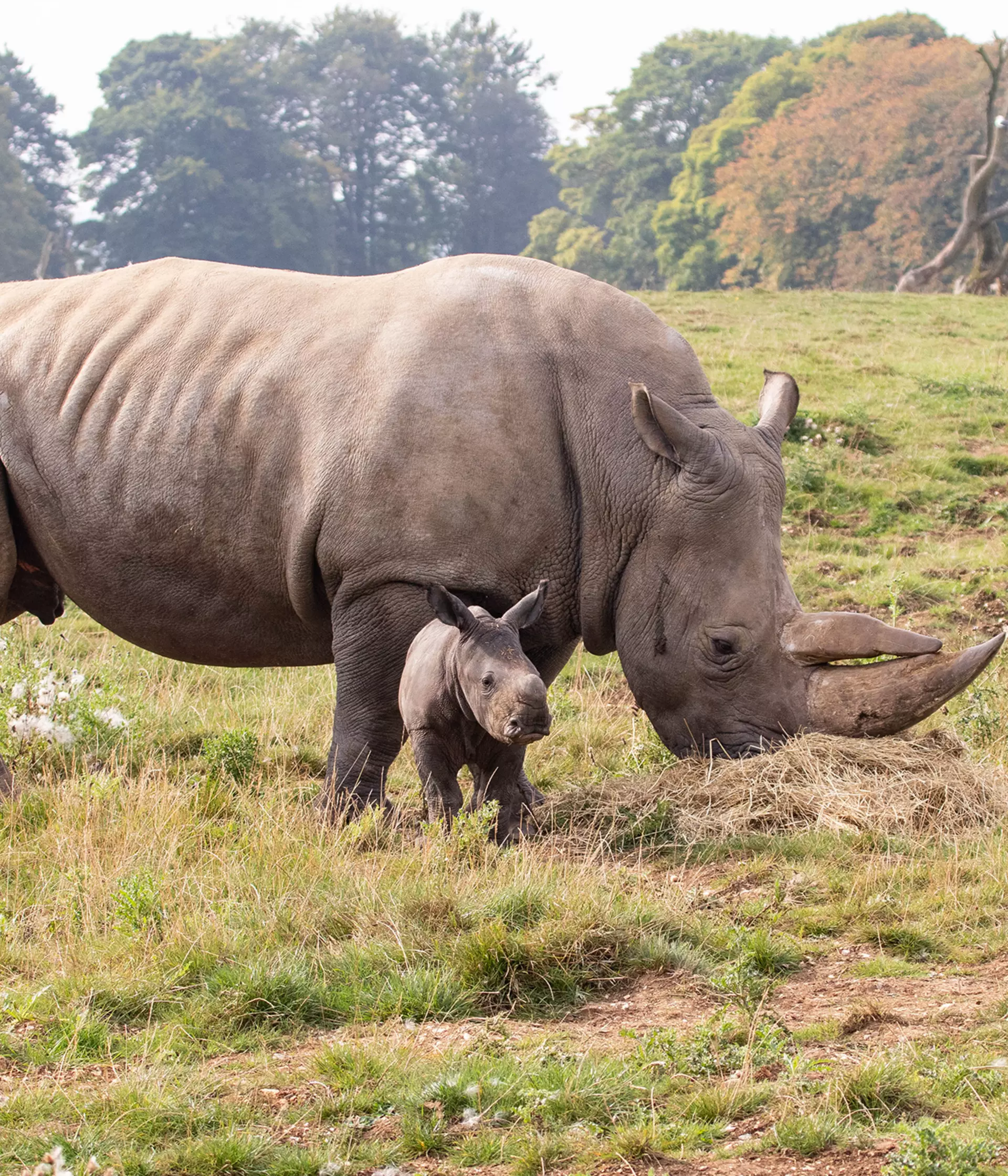Conservation breeding at the Zoo
During your visit to Whipsnade Zoo you will see lots of animals that are part of conservation breeding programmes – including our rhino, elephants and tigers.
This means we are breeding them to keep their species healthy in zoos with a population that could eventually be released back into the wild.
For many animals wild release remains out of reach at the moment because natural habitats are so degraded they can’t sustain populations, and the wild animal numbers are steadily declining or already extinct-in-the-wild.
But for others there is more opportunity and Whipsnade Zoo conservationists have been able to successfully breed and reintroduce animals back to the wild. This includes animals like the corncrake and scimitar horned oryx.
We are also able to use everything we learn from keeping animals here to advise vets and conservationists in other countries who want to reintroduce animals from local protected breeding populations. This includes species like griffon vultures, hihi birds and even Amur tigers in Russia.
ZSL wildlife reintroduction
The bird that's shaping wildlife reintroductions globally
How this tiny bird is helping reframe wildlife conservation translocation programmes across the world.
Saving species through Whipsnade breeding programmes
Creating and maintaining sustainable breeding populations is integral to Whipsnade Zoo’s role in conservation – but we don’t do it alone.
Breeding programmes in zoos are managed collaboratively at a European, or sometimes global, level. The aim of the European Endangered Species Programmes (EEP) is to ensure those species threatened with extinction in the wild has a healthy backup population in zoos.
A healthy population needs to be demographically and genetically diverse to ensure individuals have the highest possible fitness. These animals are then both available and suitable for reintroduction should the need be identified in a species conservation plan.
The pairing and breeding of individual animals is overseen by a single European or global studbook holder, who makes “matches” based on genetic diversity and other suitability criteria. It means if Whipsnade Zoo (or any zoo) is requested to send an animal to another zoo for breeding, we will co-operate to ensure the overall zoo population is as strong and healthy as possible.
Reintroducing animals to the wild
The degraded state of many wildlife habitats means reintroduction from zoos is still not a commonly used tool for species conservation, but it is one of a range of options considered.
If the wild release of animals born in zoos is determined to be the best conservation approach, a conservation breeding centre may be established in the range country while any work to optimise the local habitat is undertaken.
There are lots of things to think about including disease-risk analysis to ensure no new pathogens are introduced to fragile wild ecosystems. At Whipsnade Zoo we plan to build a native species conservation facility where we can lead on native species breeding, population enhancement and responsible reintroduction for important species like the Hazel dormouse, red backed shrike and native pool frog.
Conservation at ZSL
Sihek conservation
We're creating solutions to save the sihek from the jaws of extinction - as invasive snakes outnumber people in Guam by 10 to 1.
Restoring mountain chicken frog populations
Creating routes to recovery through cutting-edge scientific research and breeding at London Zoo.
World leading wildlife research
At ZSL we carry out the most comprehensive scientific study of average wildlife populations to shape conservation globally.
